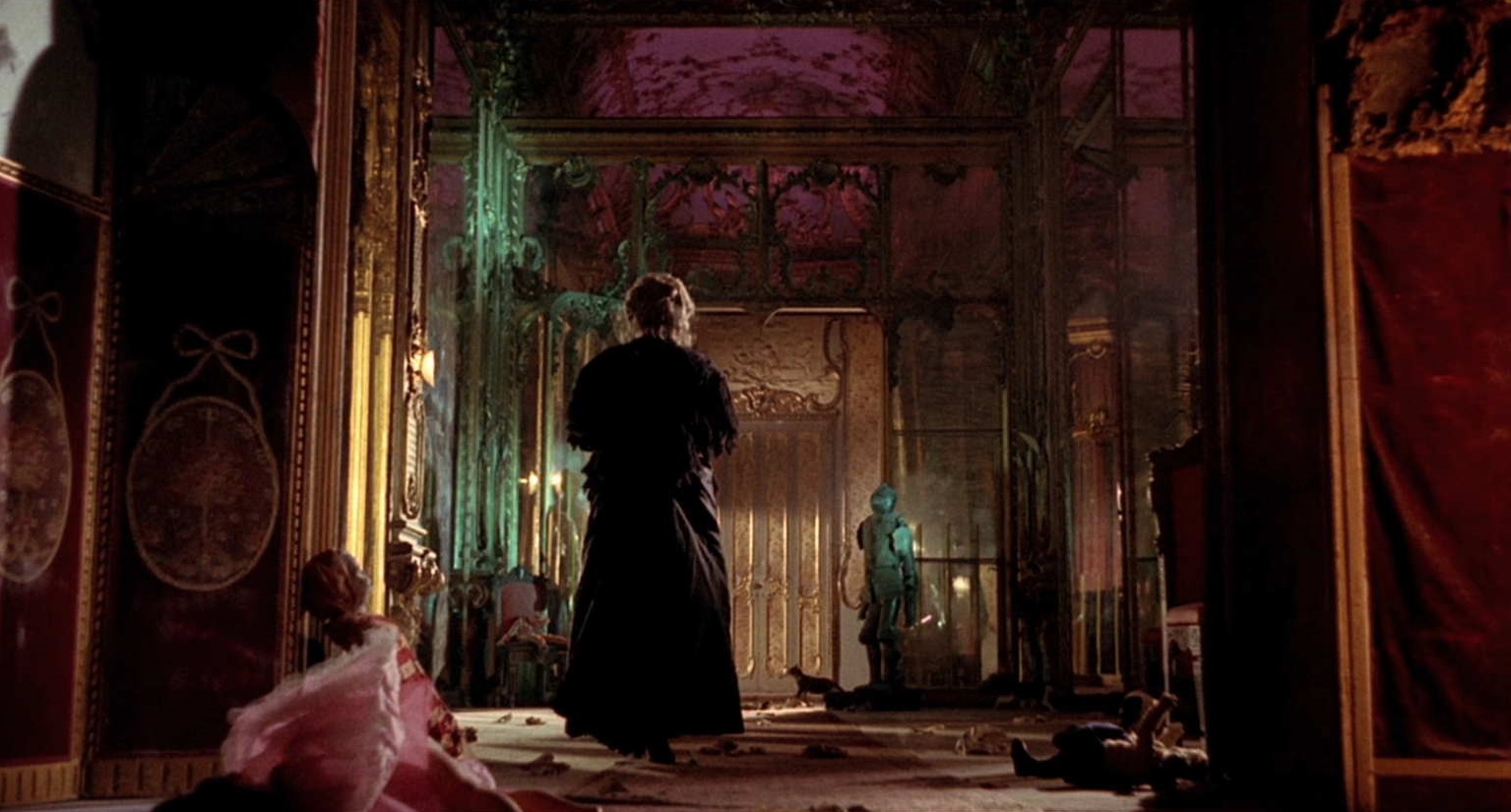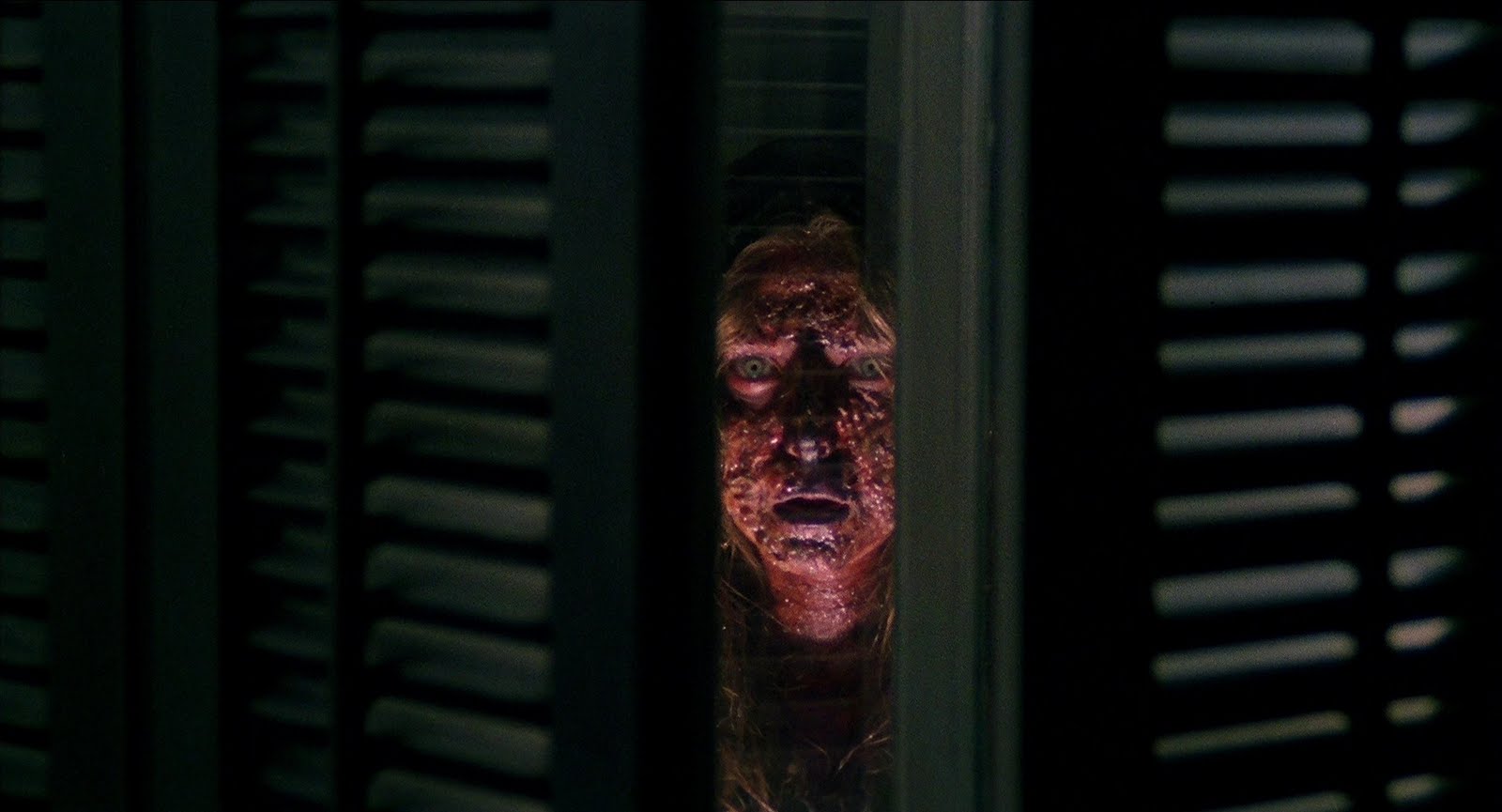By Andrea Veltroni / October 23, 2017
I’ve always hated realism. In his Histoire du Cinema, Godard includes an almost touching dedication to Italian neorealism, stating that Italy is the only country in Europe to possess a “cinema of resistance.” Personally, I’ve never understood what people actually mean when they talk about a “cinema of resistance,” but in Italy it’s a legacy whose weight (in the form of that burdensome ancestor, neorealism) we have been carrying upon our backs for decades now. In Italy, film criticism itself came into existence in the shadow of that particular period of history, and it was difficult to produce genre films here without being accused of being a reactionary or, indeed, a fascist. But imagination has little to do with social realities: the imagination is itself reactionary.
Much of the morbidity typical of native Italian visionary talent is already there to be witnessed in the scene in Roberto Rossellini’s Rome, Open City (1945) where Luigi, the partisan who refuses to reveal to the Nazis the location of the headquarters of the National Liberation Committee, is interrogated: the camera enters the torture chamber, dwelling on the victim’s bloody face and perhaps anticipating the genres that decades later would spawn the torture porn films that would make millions at the box offices of the third millennium.
Next came the so-called commedia all’italiana—the Italian comedy of manners that, set against the background of the economic boom the country was then enjoying, tackled the hot topics of the day with a mixture of farce, grotesque, and melancholy. The film considered the progenitor of the genre was Mario Monicelli’s 1958 I Soliti Ignoti (known in English-speaking countries as Big Deal on Madonna Street). I Soliti Ignoti changed everything: it was qualitatively superior cinema, at least from a technical point of view, and the screenwriters—and especially the musicians who created the soundtrack—were infinitely more talented than their predecessors. The composer of I Soliti Ignoti’s soundtrack was none other than Piero Umiliani, who would go on to become one of Italy’s best-known soundtrack composers (and beloved of children worldwide for writing “Mah Nà Mah Nà“). Italy was riding the crest of a wave, but gradually the commedia all’italiana too began to feed upon itself, becoming first cynical and then outright vulgar, displaying pitiless disdain for gay men and the disabled, to give just two examples, throughout the 1970s.
While all of this was boiling away, Riccardo Freda had, in the wake of Hammer and English Gothic, already made what is now considered the first Italian horror film—The Vampires—in 1957, and this was followed in 1960 by Black Sunday, also known as The Mask of Satan, by the great Mario Bava. As the films of Federico Fellini had by then already made clear, Italian cinema had departed as much from the cattocomunist (a pragmatic blend of Catholicism and much, if not all, of Marxist thought) propaganda of neorealism so beloved of the critics as it had from the commedia all’italiana, with all of its eventual tics and clichés, which included satirizing new taboos and an obsession with laying bare the vices of the putative “average Italian.”
When Italian genre cinema discovered color, masterpieces like Bava’s 1963’s I Tre Volti della Paura (known in English as Black Sabbath) and 1966’s Operazione Paura (Kill, Baby, Kill) began to appear—films to which directors like Scorsese and Tim Burton would owe much. But despite the notable success the films enjoyed with the public, the country’s critics were still reluctant to give up their pacifier: Italy did not want to accept its true visionary nature. And yet, ladies and gentlemen, the glorious season of the giallo was about to begin, and, once Dario Argento arrived, nothing would ever be the same again. The red and blue filters used in Bava’s many films returned, but this time with the addition of a whole universe: a universe of morbidity, sadism, and fetish (like the details of leather gloves, of mascara, of the anatomical details of the films’ victims). Here, then, is the dirty underwear of our imagination: the fear of women, always adored and tortured, never actually either “virgin or whore” but instead victim and slave, angel and demon, as per the best Catholic tradition—a Madonna and a temptress like Eve, redeeming like Mary Magdalene. In Argento’s movies, the woman is often the killer, committing crimes of unheard-of violence, and in the films that imitated his work (and the ’70s would be overflowing with films that aped the Roman director’s masterpieces), the woman kills and at the same time is killed, brutalized and abused, the female protagonist often possessing a backstory involving torture or an unhealthy relationship with her father.
This was the patriarchy creaking under the weight of the lost and feared matriarchy. The matriarchy of the great mother, of Medea, of the terrifying Mediterranean woman capable even of killing her own children for revenge. In Italian genre cinema, the woman is a mythological figure that fascinates, at once oppressing and being oppressed, something which, long before the appearance of giallo films, Fellini knew very well: he filled his visionary movies with big tits and big backsides—languid, welcoming, good-natured, and threatening.
Over its history, Italy has been pagan, Catholic, Arab, Byzantine and Longobard, Spanish, French, and even Austrian. In a word, it has been Italy, and in our culture, fear lives on in those forms of guilt that reside in all the various attics of the European and Mediterranean mind. We are surrounded by the sea and yet we are attached to the earth, at the mercy of dreams while we crawl through reality. But dream is the only true reality—or better, it is the only truth. Dreams, we might say, are honest without being true, real without being realistic. In dreams, there are only us and our fears, and this is the well from which Italian genre cinema has always drawn: from dreams and nightmares, from the truth of our most unspeakable unconscious.
The Italian is not a “verista” like Verga, or a realist like Rossellini and De Sica (who, like many other filmmakers and intellectuals, had both continued to work under fascism, only to reinvent themselves as antifascists after the end of the war), but a visionary like Fellini, like Dante, or like Caravaggio. Like Pasolini, a Catholic and a Marxist, with all the contradictions that implies—and with all the moralism the Italian Communist party of the day imposed upon him and used to punish his homosexuality—who was not sadistic, but something more: he was, as his friend, avant-garde actor, writer and director Carmelo Bene put it, “Sadeian,” and therefore genuinely visionary. It is no coincidence that, with films such as Accattone (1961) and Mamma Roma (1962), Pasolini outgrew neorealism, and his true artistic legacy remains 1975’s Salò, or the 120 Days of Sodom, which perhaps unintentionally anticipated the kitsch horrors of ’70s sexploitation, with its sadism and Nazis. As Carmelo Bene also said of him, “He was violent!”
The Italy of the 1960s and ’70s was violent too. The country was going through the “Years of Bullets,” with their terrorist massacres, political streetfighting, stagnating democracy, and the strategy of tension, all of which was reflected in both cinema impegnato (the politicized cinema that took as its symbol the face of actor Gian Maria Volontè, making him now a laborer, now a police commissar, now an anarchist) and in the films I’m writing about here—our noir, only in Italy it took on another hue: yellow—giallo in Italian—like the spines of the country’s cheap paperback thrillers.
Not counting Morricone, the 20th century genius already much celebrated even back then, the composers who wrote the music for these films—names like Nicolai, Ortolani, Goblin, Gaslini, Cipriani, and Alessandroni—would only be rediscovered decades later, while the directors of photography—names like Tovoli, Kuveiller, and Delli Colli—would become some of the most respected around. And the most talented of the make-up artists, like Giannetto de Rossi or Carlo Rambaldi, would go on to have long and respected careers. The critics, of course, were able only to reject the films in toto, like some poisoned broth, the number of negative reviews and hatchet jobs verging on the ridiculous. In essence and in form (because, as the Russian formalists had pointed out, form is substance), however, the giallo was one of the high-points of Italian filmmaking. Outside of Italy, this was discovered either immediately or at a later date, sometimes through the work of directors like Quentin Tarantino (whose films are fun), and occasionally with sincere demonstrations of esteem and respect.
In Italy, though, we have always excelled at spitting upon our countrymen, and therefore it’s no coincidence that genre film (despite the work of a man who is always listed, in any rankings, as being among the top 10 greatest directors of all time: Sergio Leone) in general, and giallo in particular, is no longer produced here.
Translated from the Italian by Richard McKenna.
![]() Andrea Veltroni was born in Damascus (Syria) and lived in Algeria and Switzerland before settling in Rome. He has worked for Italian national radio (RAI) and now composes scores and music for radio, TV, and movies for some of Italy’s most important library music labels (raitrade, GDM).
Andrea Veltroni was born in Damascus (Syria) and lived in Algeria and Switzerland before settling in Rome. He has worked for Italian national radio (RAI) and now composes scores and music for radio, TV, and movies for some of Italy’s most important library music labels (raitrade, GDM).








Pingback: Il Giallo dei Ragazzi, 1970 – 1984
Pingback: Slasher Film Posters, 1980 – 1988
Pingback: ‘The Fall of Delta Green’: Review and Interview with Kenneth Hite
Pingback: Welcome to the Jungle: Fun and Games in Antonio Margheriti’s 1980s Mercenary Films
Pingback: Non-Halloween Songs for Halloween